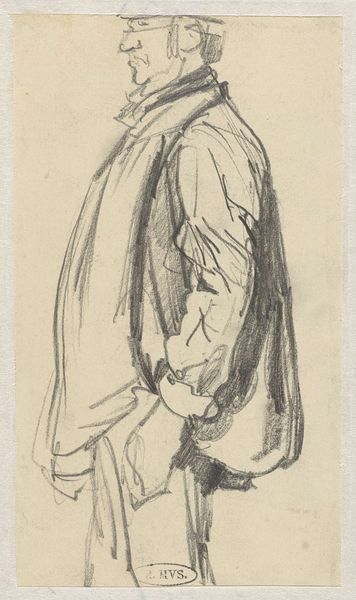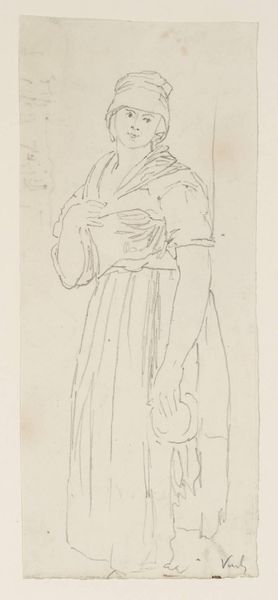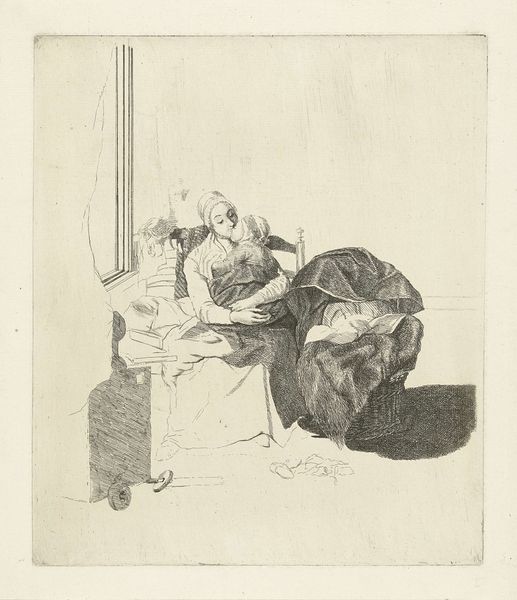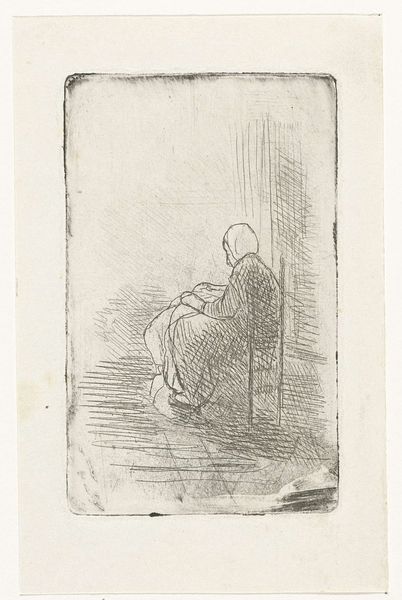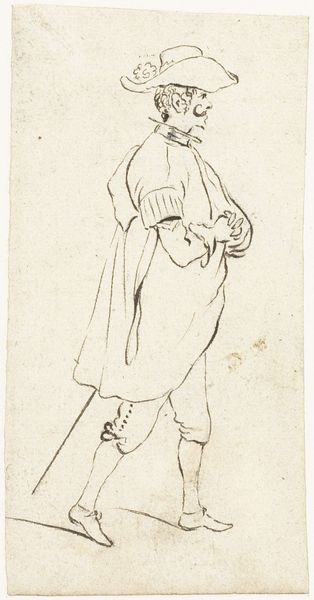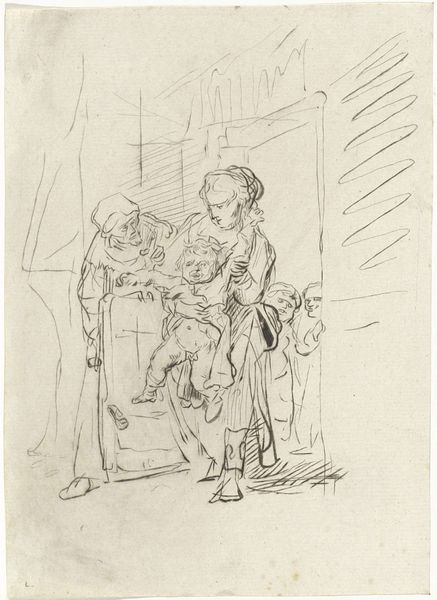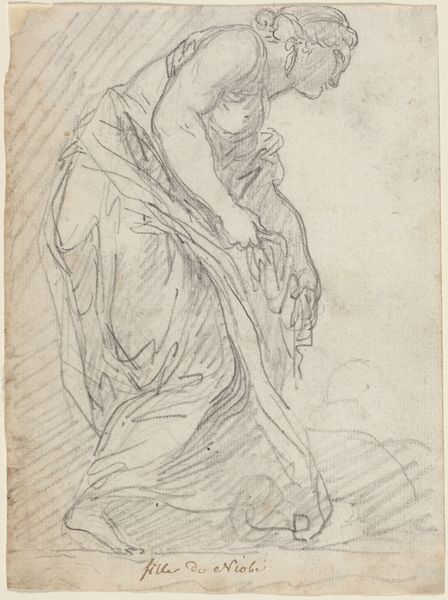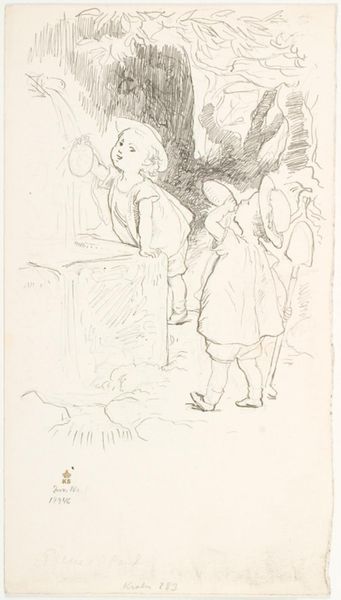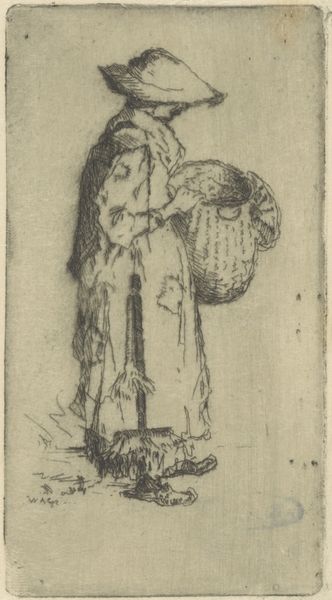
drawing, ink, pen
#
drawing
#
comic strip sketch
#
pen illustration
#
cartoon sketch
#
personal sketchbook
#
ink
#
idea generation sketch
#
sketchwork
#
ink drawing experimentation
#
pen-ink sketch
#
sketchbook drawing
#
pen
#
genre-painting
#
storyboard and sketchbook work
Dimensions: width 92 mm, height 66 mm
Copyright: Rijks Museum: Open Domain
Editor: So, this is "Boenende Vrouw," or "Woman Cleaning," by Pieter de Mare, made with pen and ink around 1777-1779. The simple lines and the mundane subject matter give it such a grounded feeling. How do you interpret this work? Curator: This seemingly simple sketch opens up a complex dialogue about the representation of women and labor in 18th-century Dutch society. It is important to ask who gets represented, and how? Is this image a sympathetic portrayal of the realities of working-class women, or does it participate in an objectification that reinforces existing social hierarchies? Editor: That’s a powerful perspective. I hadn't considered the power dynamics. The woman's face is obscured, making her almost anonymous. Curator: Precisely. How does this anonymity influence our reading of the image? Does it invite empathy or create distance? Also, consider the gaze: Whose gaze is privileged here? Is it the male artist observing the female subject? How do you think a contemporary feminist lens changes our interpretation of this artwork? Editor: Wow, I hadn’t even thought about it in terms of the male gaze! Thinking about it now, it almost feels like an intrusion on a private moment, reinforcing the idea of women’s work being unseen yet always present. Curator: And what about the broom leaning against the wall, what’s it hinting at? Editor: A never ending routine... But you’re right, it brings up uncomfortable questions about the value we place on certain kinds of labor and whose stories get told. I am viewing this art so differently now! Curator: Exactly, viewing art is a collaborative project. Now, think about this work next to a contemporary work. Editor: Definitely given me a lot to consider about context, gender, and representation.
Comments
No comments
Be the first to comment and join the conversation on the ultimate creative platform.
